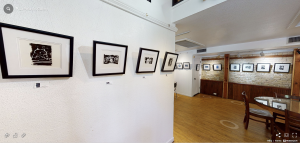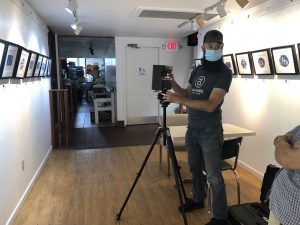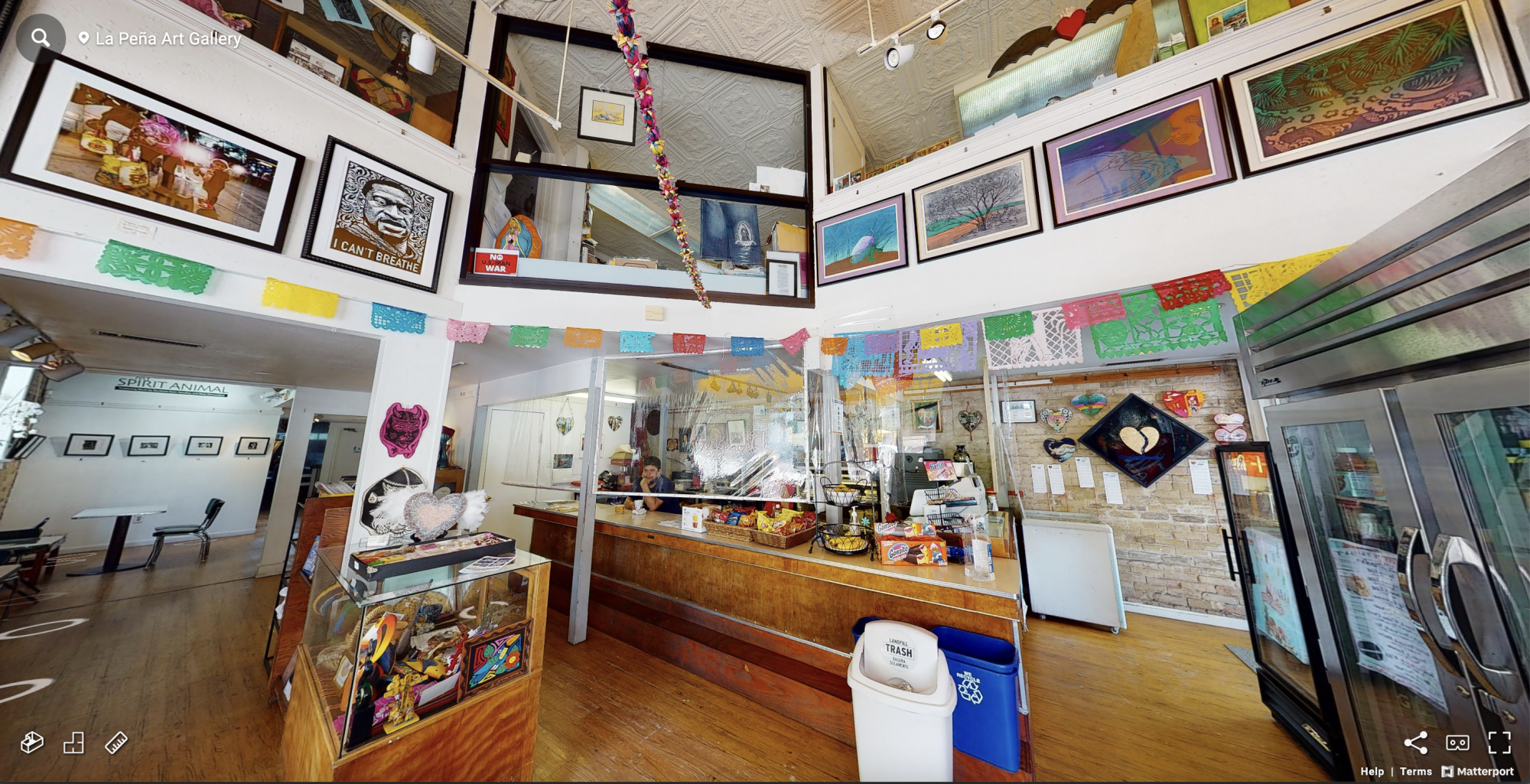On This Page
Museums and galleries lost their most critical component when the pandemic struck: the ability to provide the public the experience of going to see art. As every industry was evaluated on a new scale of the ‘essential,’ arts institutions knew that they needed to adapt, and they did. Museums and galleries around the world immediately began working to shift everything that they could possibly provide to an online realm, on a much deeper level than ever before.
Matterport
The 3D capture company Matterport emerged as a new option for museum and gallery staff who found themselves with no in-person experiences to offer. Matterport creates 360º cameras and other hardware to fully capture a space, and software to render these photographs into what the company calls a ‘digital twin.’ Unlike other 3D capture services, users can embed links to objects in the ‘twin’ space, including captions, photos, and videos. This feature is essential for museums and galleries, because some visual information does not carry through in a 3D capture alone.
Matterport’s primary clients are in real estate. It was museums and galleries themselves who saw the potential in this technology. Cynthia Perez, one of the founders of Austin art gallery La Peña, did the same for a collaborative show with Austin’s Sanchez Elementary, which was stalled by the onset of the pandemic in March 2020. The exhibition featured prints by the fourth grade class at Sanchez, and the original plan was to host an opening in which the students could come and see their work in a professional gallery–labeled, matted, and framed. With such young collaborators, it was important that they were still able to see their work in the gallery in some capacity. Cynthia and I negotiated with a local graphics and imaging company that used Matterport technology to create a 360º virtual gallery, in which users can navigate the gallery space with the students’ work in it.
Navigating Ethical Issues
Several dilemmas emerged during this project. When the embedded photo and video feature came up, the representative of the company we were working with pitched the idea of students submitting brief videos explaining their work. They even wrote up a short script to send to them. Perez raised several issues with this: the children’s privacy would have to be carefully protected, meaning that the school would have to issue a waiver to all of their parents beforehand. The issue of privacy and safety was amplified in the case of Sanchez, because at the time a number of students and their families were undocumented. Furthermore, a number of the families were already struggling with technological resources. Many did not have a computer in the home, so they lent their children their cell phones to do their classes and homework. Reliable wifi and cell reception needed to send these videos was also becoming an issue, due to the strain caused by the sudden shift to remote work and school. Cynthia and I explained these issues to the company representative, and we moved forward without any embedded photo or video. Our final product was simpler and had less content, but it was the best solution we could create with our collaborators’ needs in mind.

People outside of community engaged work usually aren’t aware of the sensitive way that organizers and leaders must approach the people they work with. From the perspective of the tech industry, the goal in creating a successful digital product is polish, a clever presentation of information that increases engagement and drives revenue. They spend a lot of time building out complex features like embedded photo and video within a 360º capture, so it makes sense why they think this way. However, there is often a need to visualize a different goal, especially when it comes to small organizations that work closely with vulnerable communities. Luckily, the company we worked with was receptive to our feedback and we were able to proceed with the project.

Choosing the Right Collaborator
It is important to find a tech company that is able to put their own industry mindsets aside to work with your organization, or better yet, a company that leads with your organization’s unique goals. Many technology and software companies do not actively cater to museums and galleries as much as they cater to other industries. This means that museum and gallery professionals often have to make these connections themselves. However, this is changing. Companies like Cuseum, who serve nonprofit arts organizations, have designed augmented reality services specifically for museums. The more the need is recognized, the more services will become available. It is just a matter of choosing the right one.
You can browse La Peña’s virtual gallery here.
